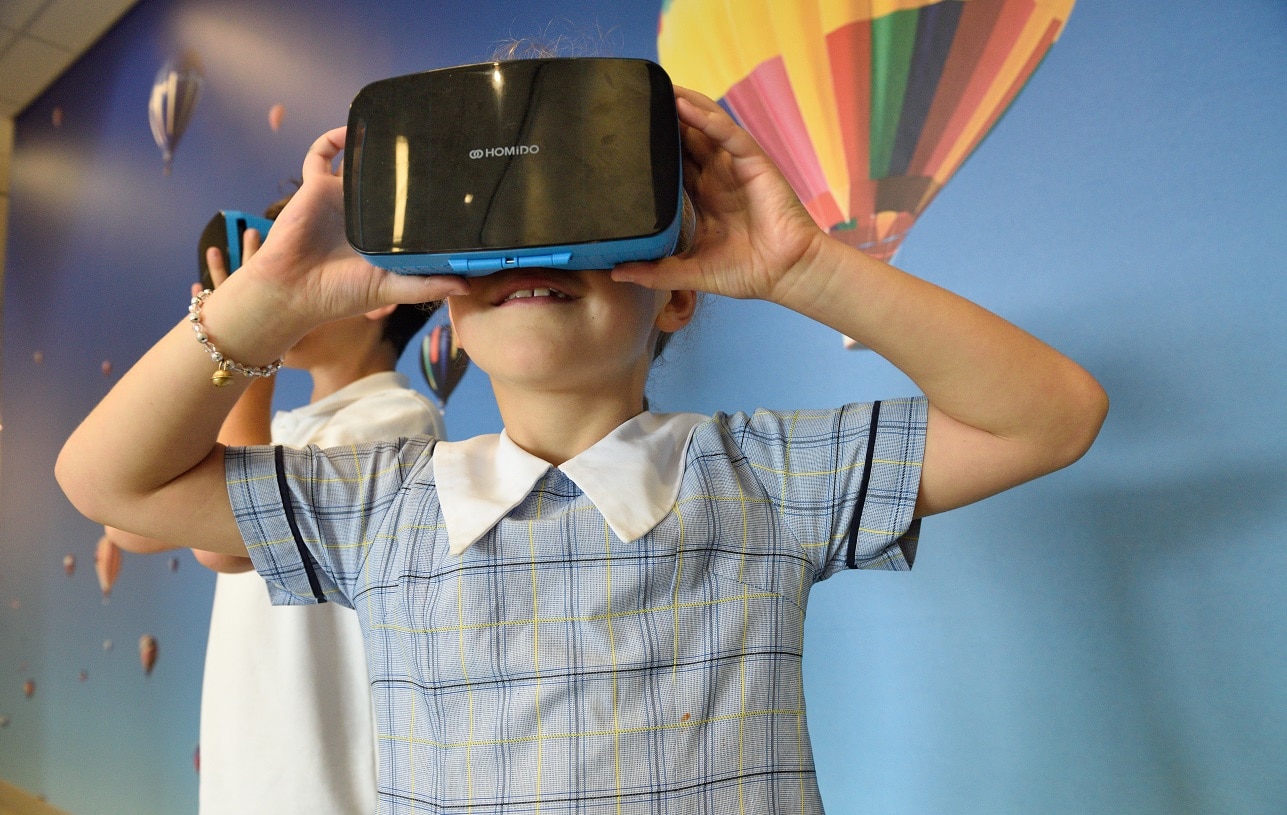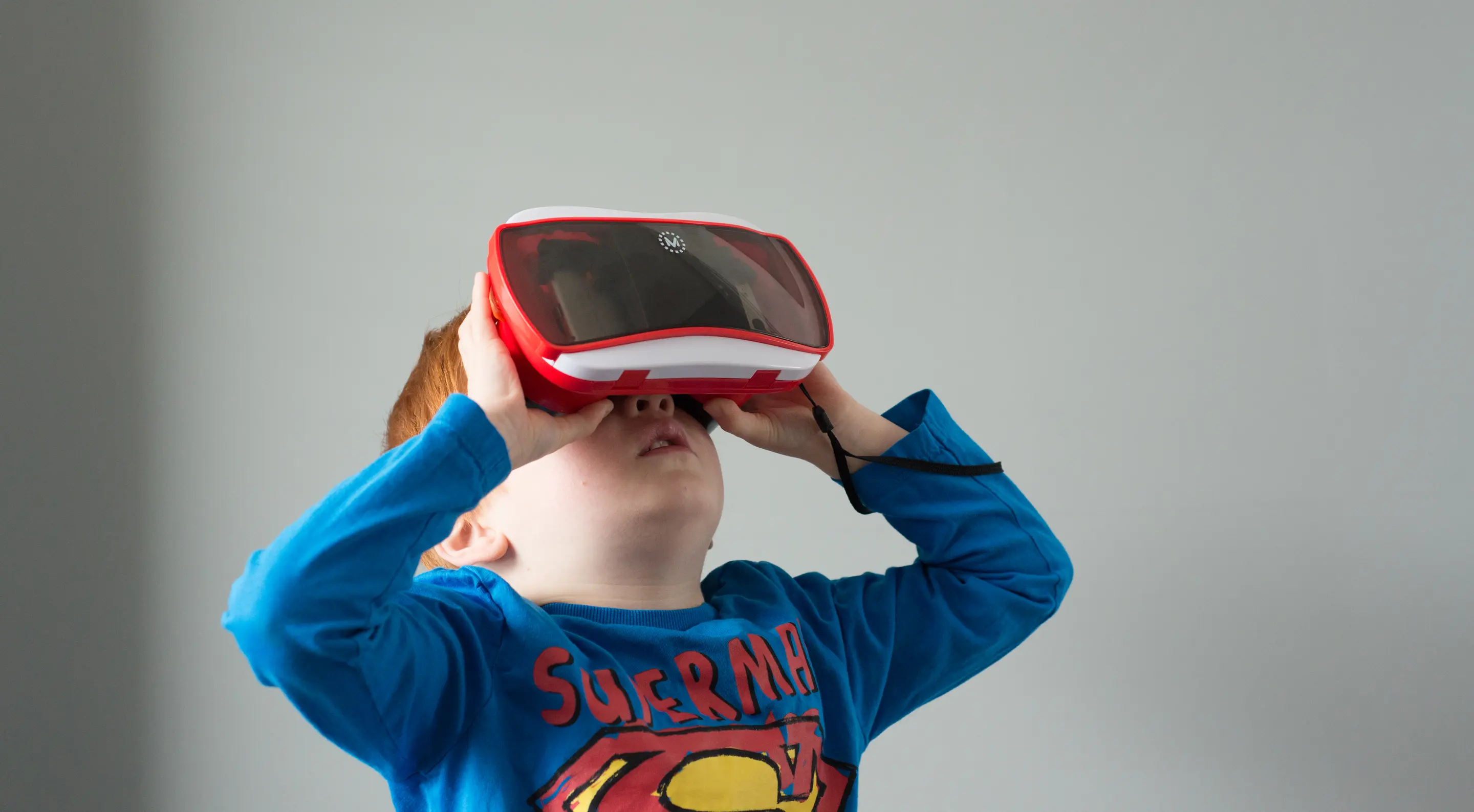Introduction
Augmented Reality (AR) has emerged as a groundbreaking technology that blurs the line between the physical and digital worlds. It provides users with an immersive experience by overlaying digital content onto the real world, enhancing interactions and transforming various industries. In the realm of e-commerce, Augmented Reality has gained significant traction, revolutionizing the way we shop online.
With its vast influence and dominance in the e-commerce market, Amazon has unsurprisingly embraced Augmented Reality to deliver innovative and interactive experiences to its customers. By integrating AR into its platform, Amazon is providing shoppers with the ability to visualize products in their environments before making a purchase, significantly enhancing their shopping journey.
By leveraging AR technology, Amazon has opened up new avenues for retailers and brands to showcase their products, enticing customers with immersive experiences and enhancing their online shopping experience. From trying on virtual clothes to previewing furniture in a room, Amazon’s AR capabilities have set a new benchmark for the e-commerce industry.
In this article, we will explore the various types of Amazon Augmented Reality experiences, how they work, and the benefits they offer to both customers and businesses. We will also delve into some popular Amazon AR products that have gained widespread popularity among consumers.
So, whether you’re a tech enthusiast or an online shopper looking to explore the world of AR, join us as we uncover the fascinating world of Amazon Augmented Reality and its impact on the e-commerce landscape.
Definition of Augmented Reality
Augmented Reality (AR) can be defined as a technology that superimposes digital information, such as virtual objects or images, onto the real world, enhancing the user’s perception and interaction with their environment. Unlike Virtual Reality (VR), which creates an entirely immersive digital environment, AR enhances the real-world environment by overlaying digital elements onto it.
AR technology combines computer-generated virtual content with the user’s real-world environment, creating a seamless blend of the two. It is typically experienced through devices such as smartphones, tablets, smart glasses, or specialized AR headsets.
The primary aim of Augmented Reality is to enhance and augment our perception of reality by providing additional information, context, or entertainment. By integrating digital elements into our physical surroundings, AR creates a more immersive and interactive experience, bridging the gap between the digital and physical worlds.
AR can be categorized into two main types: marker-based and markerless (or location-based) AR. Marker-based AR uses specific visual markers, such as QR codes or image recognition, to trigger the overlay of digital content onto the real world. Markerless AR, on the other hand, relies on location data from GPS, accelerometers, or other sensors to anchor digital content to specific locations or objects.
Another aspect of AR is its ability to provide users with real-time and contextually relevant information. For example, in an e-commerce context, AR can overlay product details, pricing, or customer reviews onto physical products, helping shoppers make more informed purchasing decisions.
With the continuous advancement in technology and the increasing adoption of AR, its potential applications have expanded beyond entertainment and gaming. Industries such as retail, education, healthcare, and marketing are leveraging AR to enhance user experiences, improve productivity, and drive innovation.
Now that we have explored the definition and categories of Augmented Reality, let us uncover how AR is reshaping the world of e-commerce and how Amazon is leveraging this technology to revolutionize online shopping.
Augmented Reality in E-commerce
The integration of Augmented Reality (AR) technology into the e-commerce industry has opened up exciting possibilities for online retailers and customers alike. AR in e-commerce allows shoppers to visualize products in a virtual space, providing a more interactive and immersive online shopping experience.
One of the key challenges of online shopping has always been the inability to physically interact with products before making a purchase. This limitation often results in uncertainty and hesitation among shoppers. However, with the advent of AR, customers can now preview products virtually and see how they would look or fit in their real-world environment.
In the fashion and apparel industry, for example, AR enables customers to virtually try on clothes and accessories using their smartphones or tablets. By leveraging AR technology, customers can see how a particular outfit would look on them without physically trying it on. They can experiment with different styles, colors, and sizes, significantly reducing returns and enhancing customer satisfaction.
AR is also transforming the furniture and home decor sector. Customers can now use their mobile devices to virtually place furniture items in their homes and see how they would blend with their existing decor. This feature helps customers make better-informed decisions about product dimensions, styles, and colors, leading to a more personalized and satisfactory shopping experience.
Moreover, AR in e-commerce provides a unique opportunity for businesses to showcase their products in a more engaging way. Instead of relying solely on static images or product descriptions, AR allows retailers to offer 3D models and interactive demonstrations that captivate customers and increase their purchase intent.
Amazon, being a frontrunner in the e-commerce industry, has recognized the immense potential of AR and has seamlessly integrated this technology into its platform. By incorporating AR features, Amazon aims to provide a more immersive and informative shopping experience to its customers.
Next, we will explore how Amazon utilizes Augmented Reality to enhance the online shopping journey for its customers.
Amazon’s Use of Augmented Reality
As a leader in the e-commerce industry, Amazon has been at the forefront of integrating Augmented Reality (AR) technology into its platform to enhance the online shopping experience. By leveraging AR, Amazon has revolutionized how customers interact with products and make purchase decisions on its platform.
One of Amazon’s notable AR initiatives is the “Amazon AR View” feature, which allows customers to visualize products in their own homes using their smartphones. By selecting the AR View option on the Amazon app, customers can virtually place products like furniture, electronics, and household items in their living spaces, giving them a realistic sense of how the items would look and fit.
Moreover, Amazon has implemented AR technology in its “Amazon Wardrobe” feature. This feature enables users to try on clothes virtually before making a purchase. Customers can select garments, view them on a digital mannequin, and see how they would look on different body types. This functionality provides a more interactive and personalized shopping experience, reducing the uncertainty associated with purchasing clothing online.
Furthermore, Amazon has integrated AR into its “Amazon Lens” feature. By accessing the Amazon app’s camera, customers can scan real-world products to get instant access to additional information, customer reviews, and related product recommendations. This AR-powered visual search feature allows users to explore and discover products more efficiently, enhancing their overall shopping experience.
In addition to these customer-facing AR features, Amazon has also ventured into using AR technology for its business operations. The company utilizes AR to optimize its warehousing and logistics processes. By equipping employees with AR headsets, they can access real-time information, receive guidance on picking and packing items, and efficiently navigate through the warehouse. This implementation of AR enhances productivity and accuracy, leading to faster order fulfillment and improved customer satisfaction.
Amazon’s commitment to leveraging AR technology demonstrates its dedication to providing a more immersive, convenient, and informative online shopping experience. By blending the virtual and physical worlds, Amazon is reshaping the way customers interact with products and making the online shopping journey more engaging and enjoyable.
In the next section, we will delve into the different types of Augmented Reality experiences offered by Amazon and explore how they work.
Types of Amazon Augmented Reality Experiences
Amazon offers a diverse range of Augmented Reality (AR) experiences to enhance the online shopping journey for its customers. These AR features provide interactive and immersive ways to visualize and explore products before making a purchasing decision. Let’s explore some of the notable types of AR experiences offered by Amazon:
1. Amazon AR View: This feature allows customers to use their smartphones or tablets to virtually place products in their own environments. By selecting the AR View option in the Amazon app, users can visualize items like furniture, electronics, and home decor in their homes. This AR experience provides a realistic sense of scale, allowing customers to see how the products would fit and complement their living spaces.
2. Amazon Wardrobe: This AR-powered feature focuses on the fashion and apparel industry. Customers can virtually try on clothes and accessories using the Amazon app. By using their smartphone’s camera, users can see how different clothing items would look on themselves or on a chosen body type. This AR experience helps customers make more confident purchasing decisions by allowing them to visualize how the clothes would fit and look on their own bodies.
3. Amazon Lens: The Amazon Lens feature utilizes AR technology to enhance visual search capabilities. By accessing the camera within the Amazon app, users can scan real-world products and instantly receive additional information, customer reviews, and related product recommendations. This AR-powered visual search feature simplifies product discovery and enables users to make more informed purchasing decisions by providing valuable information at their fingertips.
4. Amazon AR Development Tools: Apart from customer-focused experiences, Amazon provides AR development tools for businesses and brands to create their own AR experiences. Through their AR development platform, Amazon Sumerian, developers can build immersive AR applications that can be integrated into the Amazon ecosystem. This opens up opportunities for businesses to enhance brand engagement, product visualization, and customer experiences using AR technology.
By offering these various AR experiences, Amazon is transforming the online shopping landscape and providing customers with interactive and visually engaging ways to explore and evaluate products. These AR features enable customers to make more confident purchasing decisions by virtually experiencing the products in their own environments.
Now that we have explored the types of Amazon Augmented Reality experiences, let’s dive into how Amazon’s AR technology actually works in the next section.
How Does Amazon AR Work?
Amazon utilizes sophisticated technology to enable its Augmented Reality (AR) features, providing customers with immersive and interactive online shopping experiences. While the specific implementation may vary across different AR experiences, here’s a general overview of how Amazon AR works:
1. Computer Vision and Image Recognition: To enable features like Amazon AR View and Amazon Wardrobe, Amazon utilizes computer vision and image recognition technologies. These technologies analyze the user’s environment, such as their room or their body, and map it with high precision. By identifying key visual features and markers, Amazon’s AR system can accurately overlay virtual objects or clothing onto the real-world environment.
2. 3D Modeling and Rendering: For realistic product visualization, Amazon employs 3D modeling and rendering techniques. Based on product information and images, specialized algorithms generate detailed 3D models of the products. These models are then rendered onto the user’s device, taking into account factors such as lighting, shadows, and textures, to ensure a seamless integration of virtual objects into the real world.
3. In-App Integration: Amazon integrates its AR features, such as Amazon AR View and Amazon Wardrobe, directly into its mobile app. Users can access these features by selecting the relevant options within the app’s interface. Once activated, the app utilizes the device’s camera and sensors to capture and analyze the user’s surroundings, overlaying virtual content onto the live camera feed in real-time.
4. Machine Learning and Data Analysis: Behind the scenes, Amazon leverages machine learning and data analysis to enhance the accuracy and effectiveness of its AR experiences. By gathering data on user interactions and feedback, Amazon continually improves its AR algorithms, making them more intuitive and responsive. This iterative process allows Amazon to deliver a seamless and personalized AR experience to its customers.
Overall, Amazon’s AR technology combines computer vision, image recognition, 3D modeling, rendering, and machine learning to offer users a powerful and engaging online shopping experience. By leveraging these technologies, Amazon enables customers to virtually visualize products in their own environments, enhancing their confidence and satisfaction with their purchase decisions.
In the next section, we will explore the benefits that Amazon’s Augmented Reality experiences bring to both customers and businesses.
Benefits of Amazon Augmented Reality
Amazon’s integration of Augmented Reality (AR) technology into its platform brings numerous benefits to both customers and businesses. These benefits enhance the online shopping experience, drive customer satisfaction, and facilitate business growth. Let’s explore some of the key advantages of Amazon Augmented Reality:
1. Enhanced Product Visualization: AR allows customers to virtually visualize products in their own environments, overcoming the limitations of traditional online shopping. From furniture to clothes, customers can see how products look, fit, and interact with their surroundings. This enhanced visualization capability leads to more informed purchasing decisions and reduces the likelihood of returns or buyer’s remorse.
2. Increased Customer Engagement: Amazon’s AR experiences encourage active engagement from customers. By offering interactive and immersive features, customers are more likely to spend more time exploring products, experimenting with different options, and ultimately feeling more connected to the brand. This increased engagement drives customer loyalty and repeat purchases.
3. Personalized Shopping Experience: With AR, Amazon can provide a more personalized shopping experience. By leveraging customer data, preferences, and historical purchases, Amazon can recommend products and provide virtual previews that align with each customer’s unique preferences. This level of personalization enhances customer satisfaction and builds a stronger connection between customers and the brand.
4. Reduced Product Returns: By allowing customers to virtually try on or visualize products, Amazon’s AR experiences significantly reduce the chances of product returns. Customers can make more confident purchasing decisions, ensuring that the product meets their expectations. This not only saves time and resources for both customers and businesses but also enhances overall customer satisfaction.
5. Competitive Advantage: By staying at the forefront of AR technology, Amazon maintains a competitive edge in the e-commerce market. The integration of AR features sets Amazon apart from its competitors and positions the brand as a leader in shopping innovation. This differentiation attracts customers and strengthens customer loyalty, leading to increased market share and business growth.
6. Optimized Supply Chain and Operations: Amazon’s use of AR extends beyond the customer-facing experiences. It also optimizes internal operations and supply chain management. With AR headsets and technology, Amazon employees can navigate warehouses efficiently, locate products accurately, and streamline the picking and packing processes. This increases productivity and reduces errors, ultimately improving order fulfillment and customer satisfaction.
Overall, Amazon Augmented Reality brings a wide range of benefits to both customers and businesses. From enhanced visualization and personalization to reduced returns and improved operational efficiency, AR technology enhances the overall online shopping journey, creating a positive and immersive experience for all stakeholders.
In the next section, we will explore some popular Amazon AR products that have gained popularity among consumers.
Popular Amazon AR Products
Amazon has introduced several Augmented Reality (AR) products that have gained popularity among consumers. These products showcase the power of AR technology in enhancing the online shopping experience. Let’s explore some of the popular Amazon AR products:
1. Amazon AR View: Amazon AR View allows customers to visualize furniture, electronics, and other products in their own homes using their smartphones or tablets. This feature has been widely embraced by customers looking to see how products would fit and look in their living spaces before making a purchase. It provides a realistic and immersive experience, giving customers confidence in their buying decisions.
2. Amazon Wardrobe: Amazon Wardrobe utilizes AR technology to enable customers to virtually try on clothes and accessories. By using their device’s camera, customers can see how different garments would look on themselves or on chosen body types. This AR-powered feature reduces uncertainty and allows customers to experience the fit and style of clothing items, resulting in more confident purchasing decisions.
3. Amazon Lens: Amazon Lens enhances the visual search capabilities within the Amazon app. By utilizing AR technology, customers can scan real-world products using their device’s camera and instantly access additional information, customer reviews, and related product recommendations. This allows customers to explore and discover products more efficiently, making their shopping experience more seamless and informed.
4. Amazon Sumerian: Amazon Sumerian is an AR development platform that enables businesses and brands to create their own immersive AR experiences. With Sumerian, developers can build interactive 3D scenes or environments that integrate with the Amazon ecosystem. This allows businesses to deliver unique and engaging AR experiences, enhancing brand engagement and driving customer satisfaction.
These popular Amazon AR products showcase the versatility and power of AR technology in the e-commerce industry. By enabling customers to visualize and experience products virtually, Amazon has transformed the online shopping landscape, providing a more immersive and interactive shopping experience.
In the next section, we will wrap up our exploration of Amazon’s AR initiatives and their impact on the e-commerce landscape.
Conclusion
Augmented Reality (AR) has revolutionized the e-commerce industry, and Amazon has been at the forefront of integrating this technology into its platform. Through various AR experiences such as Amazon AR View, Amazon Wardrobe, and Amazon Lens, Amazon provides customers with immersive, interactive, and personalized shopping experiences.
AR technology has significantly improved product visualization, enabling customers to virtually try on clothes, visualize furniture in their homes, and access additional product information in real-time. This enhanced visualization capability has led to more confident purchasing decisions, reduced product returns, and increased customer satisfaction.
Furthermore, Amazon’s use of AR extends beyond the customer-facing experiences. By leveraging AR technology in its warehouses and logistics operations, Amazon has optimized its supply chain, improving efficiency and accuracy in order fulfillment.
The integration of AR technology has positioned Amazon as a leader in shopping innovation, providing a competitive advantage in the e-commerce market. This has attracted customers and strengthened brand loyalty, resulting in increased market share and business growth.
The benefits of Amazon’s Augmented Reality experiences are evident for both customers and businesses. Customers enjoy a more immersive and personalized shopping journey, while businesses benefit from enhanced customer engagement, reduced returns, and optimized operations.
In conclusion, Amazon’s adoption of Augmented Reality has transformed online shopping, shaping a more interactive, informative, and enjoyable experience. As AR technology continues to evolve and improve, its integration into e-commerce platforms holds immense potential for further advancements in the online retail landscape.

























